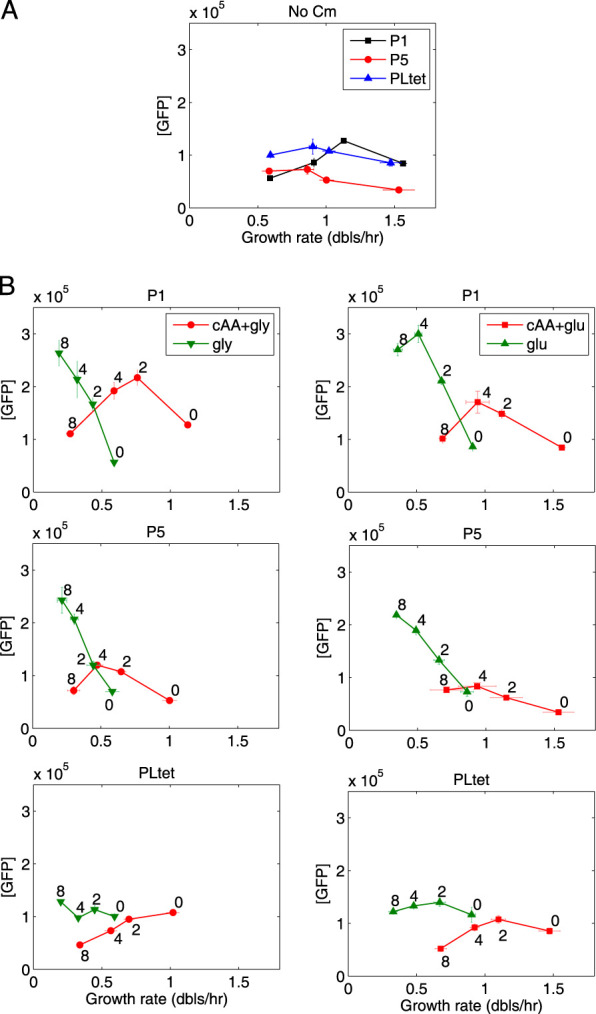FIG 1.

Promoters with different affinities for RNAP react differently to translation limitation. (A) Change in GFP concentration (relative fluorescence units [RFU] of GFP/OD610) as a function of growth rate (in doublings per hour). Four growth media were used, from the slowest to the fastest: M9-glycerol, M9-glucose, M9-glycerol+Casamino Acids, M9-glucose+Casamino Acids. P5 and PLtet are both constitutive promoters with different affinities for RNAP, while P1 is a shortened version of the rrnBP1 rRNA promoter with a RNAP affinity similar to P5 but regulated by ppGpp. (B) Change in GFP concentration as a function of increasing concentration of chloramphenicol in the four growth media. The growth media with Casamino Acids (cAA) are shown in red, and the ones without Casamino Acids are in green. The four points correspond to 0, 2, 4, and 8 μM final chloramphenicol concentration as noted next to the data points. The error bars represent the standard errors of the means (SEM) from 3 independent experiments. The error bars smaller than the symbols are not shown. Comparison of the panels shows that ppGpp regulation at the transcriptional level alone cannot account for the change in GFP expression in response to translation limitation.
